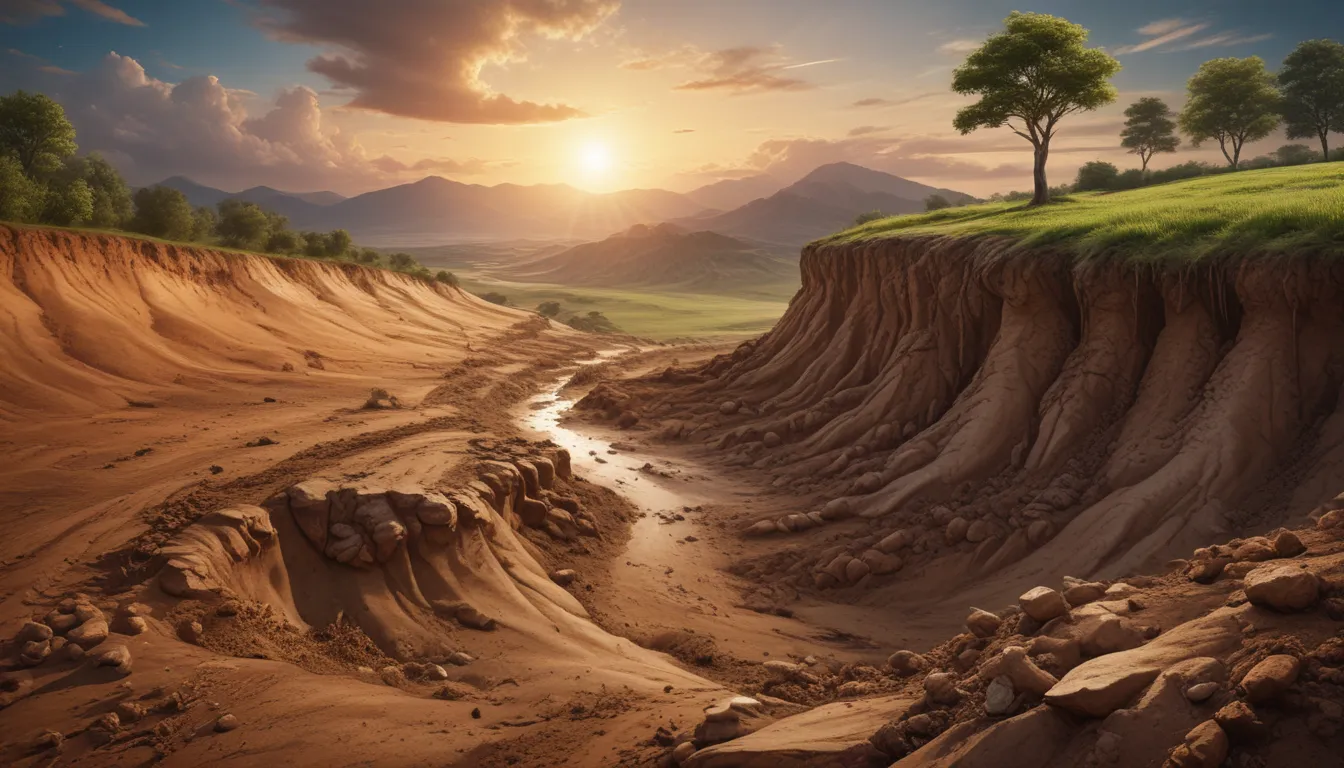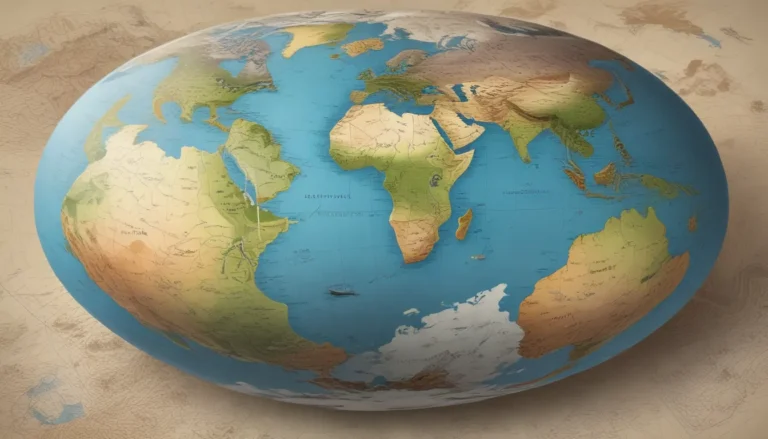A Note About Images: The images used in our articles are for illustration purposes only and may not exactly match the content. They are meant to engage readers, but the text should be relied upon for accurate information.
Welcome to a world where soil erosion poses a significant threat to our environment, agriculture, and ecosystems. As a natural process accelerated by human activities, soil erosion has far-reaching consequences that affect our planet on a global scale. In this article, we’ll delve into 19 astonishing facts about soil erosion, exploring its causes, effects, and potential solutions to this pressing environmental issue.
Understanding Soil Erosion
Soil erosion, the displacement and transportation of topsoil from its original location, is primarily caused by natural forces like wind and water, as well as human activities. Improper agricultural practices, deforestation, construction activities, overgrazing, and poor land management techniques contribute to the loss of fertile topsoil and land degradation. This process has serious implications for food security, biodiversity, and sustainability worldwide.
The Global Impact of Soil Erosion
Soil erosion affects more than 24 billion tons of topsoil annually across the world. This loss of fertile soil has significant implications for food security and sustainability, highlighting the urgent need for effective conservation measures. Approximately 40% of soil erosion worldwide is caused by agricultural activities, such as plowing, deforestation, and overgrazing, emphasizing the critical role of agriculture in this environmental issue.
Various Forms of Soil Erosion
Water erosion, driven by rainfall and runoff, is the most common form of soil erosion, leading to sedimentation in rivers and lakes. In arid and semi-arid regions, wind erosion can strip away valuable topsoil, making the land unsuitable for cultivation and posing a threat to air quality through dust storms. Both forms of erosion have detrimental effects on ecosystems, agriculture, and the environment.
Impacts of Soil Erosion
Soil erosion leads to decreased crop productivity as fertile topsoil, essential for plant growth, is eroded, resulting in reduced crop yields and environmental degradation. Additionally, erosion impacts water quality by contaminating water sources with sediment, disrupting aquatic ecosystems, and affecting the habitats of fish and other species. This process can also lead to desertification, negatively impacting biodiversity and human livelihoods.
Solutions to Soil Erosion
Erosion Control Practices
Implementing erosion control practices like contour plowing, cover crops, and terracing can help minimize soil erosion, protect the environment, and ensure a sustainable future for generations to come. Contour plowing involves plowing along the contours of the land rather than straight rows, slowing down water runoff and minimizing soil erosion on slopes. Planting cover crops, such as legumes or grasses, helps prevent erosion by covering bare ground, reducing water runoff, and improving soil health. Terracing, creating terraces or steps on steep slopes, reduces water runoff, prevents erosion, and improves water infiltration into the soil.
Importance of Education
Creating awareness about the causes and consequences of soil erosion plays a crucial role in preventing this environmental issue. By educating communities and farmers about sustainable land management practices, we empower individuals to take action and implement conservation measures effectively. Educating the public about the importance of soil preservation is essential for safeguarding our soil resources for future generations.
Role of Soil Conservation
Soil conservation measures benefit future generations by preserving and protecting our soil resources, ensuring a sustainable future. By implementing conservation practices, promoting sustainable land management, and raising awareness about the importance of soil preservation, we can work towards mitigating soil erosion and preserving the health and productivity of our land.
Conclusion
Soil erosion is a critical environmental issue with far-reaching consequences for our planet. Understanding the causes, effects, and prevention methods of soil erosion is essential to preserving the health and productivity of our land. By taking action through conservation practices, sustainable land management, and education, we can work towards mitigating soil erosion and safeguarding our precious soil resources for generations to come.
FAQs
-
What is soil erosion?
Soil erosion is the process by which topsoil is displaced and transported from its original location due to natural forces and human activities. -
What are the main causes of soil erosion?
Improper agricultural practices, deforestation, construction activities, overgrazing, and poor land management techniques are the main causes of soil erosion. -
How does soil erosion affect agriculture?
Soil erosion negatively affects agriculture by reducing soil fertility, depleting essential nutrients, and disrupting water and nutrient retention capacities, leading to reduced crop yields and economic losses for farmers. -
What are the consequences of soil erosion on the environment?
Soil erosion can contribute to the loss of biodiversity, disrupt aquatic ecosystems, and pollute water sources, leading to ecosystem imbalance and the decline of aquatic life. -
How can soil erosion be prevented?
Preventing soil erosion involves implementing measures like contour plowing, terracing, windbreaks, and cover cropping to promote soil conservation, prevent runoff, and maintain soil health.
Soil erosion is a pressing environmental issue that demands attention and action. By understanding the impact of soil erosion and implementing sustainable solutions, we can protect our planet’s precious soil resources for future generations. Let’s work together to preserve the health and productivity of our land, ensuring a sustainable future for all.






